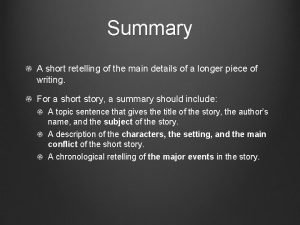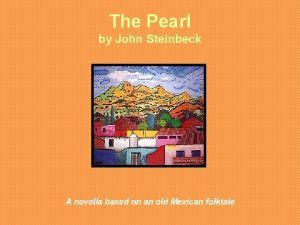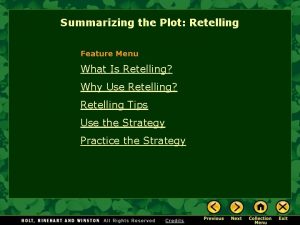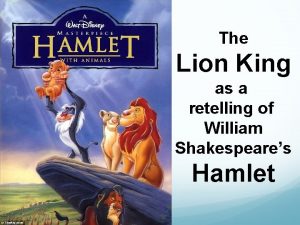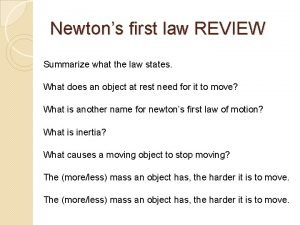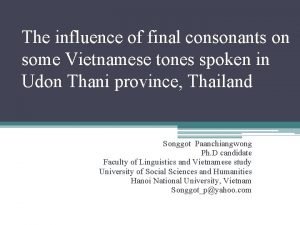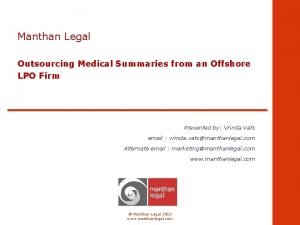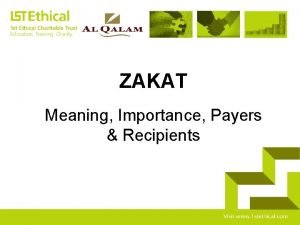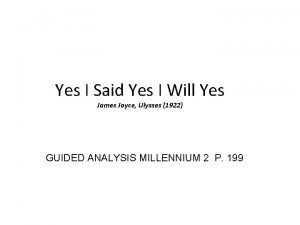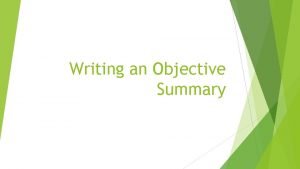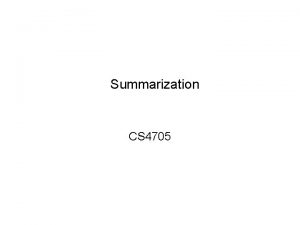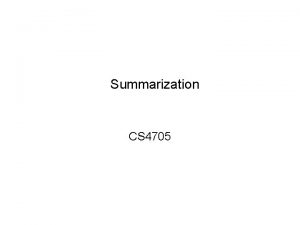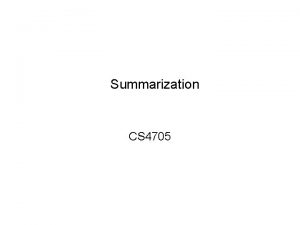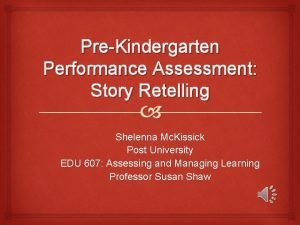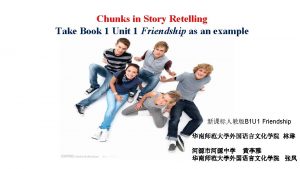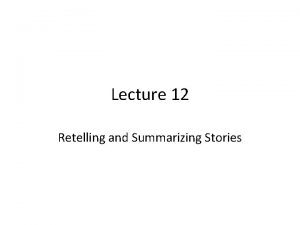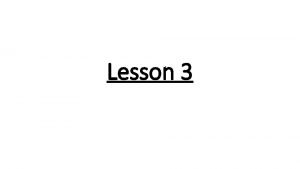Summarization Summarization A summary is a retelling of


















- Slides: 18

Summarization

Summarization A summary is a retelling of a story or passage, in a shorter form than the original. Include only the most important details and events in a summary. To decide what to include in a good summary, ask yourself these questions: 1. Who or what is the story about? 2. What happens in the story? 3. What are the most important facts, events, or ideas in the story? 4. What are the unimportant (or less important) facts or details?

Summarization Do you know the difference between a frog and a toad? Frogs and toads are similar in some ways, but there also differences. The main similarities are that both frogs and toads are amphibians. Amphibians are animals that breathe with gills when they are young, like fish. When they are older, they breathe with lungs. In their early life they live in water, but later they live on land. Also, neither frogs nor toads have tails. Both frogs and toads catch their prey with their long, sticky tongues. They eat insects, small fish, spiders, and other tiny animals, like snails. Some toads are cannibals.

Summarization 1. Who or what is the passage about? 2. What are the key facts, events, or ideas in the story or passage? 3. What are the unimportant or less important facts or details?

Summarization 1. Who or what is the passage about? The passage is about how frogs and toads are similar. 2. What are the key facts, events, or ideas in the story or passage? Frogs and toads are amphibians; they don’t have tails; they eat insects, spiders, small fish, and other tiny animals; they catch their prey with their tongues. 3. What are the unimportant or less important facts or details? Some toads are cannibals.

Summarization The best summary of a passage includes the most important facts and leave out the less important or unimportant details: The similarities between frogs and toads are that they are both amphibians, they don’t have tails, they eat insects and spiders, and they catch their prey with their tongues.

Summarization The flight attendant walked down the aisle to get the cart with the drinks. All the passengers seemed to be reading books or listening to music through their earbuds or sleeping. All except for one. Eight-year-old Maryam was in the window seat in Row 8, and her eyes were glued to the window. She was taking everything in—seeing the top sides of clouds, and viewing the earth far down below. It was amazing being up that high above the earth. “Is everything okay? ” the flight attendant asked Maryam didn’t answer—she didn’t even hear the question. Definitely her first time, thought the flight attendant. She had seen that kind of excitement before. 1. Which of these details is important for a summary? A. B. C. D. reading books drink cart first time sleeping

Summarization The flight attendant walked down the aisle to get the cart with the drinks. All the passengers seemed to be reading books or listening to music through their earbuds or sleeping. All except for one. Eight-year-old Maryam was in the window seat in Row 8, and her eyes were glued to the window. She was taking everything in—seeing the top sides of clouds, and viewing the earth far down below. It was amazing being up that high above the earth. “Is everything okay? ” the flight attendant asked Maryam didn’t answer—she didn’t even hear the question. Definitely her first time, thought the flight attendant. She had seen that kind of excitement before. 1. Which of these details is important for a summary? A. B. C. D. reading books drink cart first time sleeping

Summarization 2. Which of these details would NOT be included in a good summary of the passage? A. B. C. D. Maryam was sitting in Row 8. Maryam didn’t hear the flight attendant’s question. Maryam was excited. Maryam thought it was amazing to be up so high. 3. Which of these best summarizes the passage? A. Maryam is on her first flight and is so amazed that she doesn’t even hear the flight attendant ask her a question. B. The flight attendant asks if Maryam is okay because she isn’t acting like the other passengers. C. The view of the earth far below is amazing to Maryam. D. Unlike Maryam, the other passengers are not excited.

Summarization 2. Which of these details would NOT be included in a good summary of the passage? A. B. C. D. Maryam was sitting in Row 8. Maryam didn’t hear the flight attendant’s question. Maryam was excited. Maryam thought it was amazing to be up so high. 3. Which of these best summarizes the passage? A. Maryam is on her first flight and is so amazed that she doesn’t even hear the flight attendant ask her a question. B. The flight attendant asks if Maryam is okay because she isn’t acting like the other passengers. C. The view of the earth far below is amazing to Maryam. D. Unlike Maryam, the other passengers are not excited.

Guided Practice with Summarization Read the passage below and answer the following questions. There are many differences between frogs and toads. The frog’s skin is smooth and moist, while the toad’s skin is bumpy and dry. Some people think you can get warts from touching a toad, but that is not true. The frog’s eyes bulge out, and the toad’s eyes do not. Frogs have long legs that are strong for jumping. Toads have shorter, stubbier legs that they use for walking. Frogs also have webbed toes, so they are better swimmers than toads. Frogs have longer, leaner bodies and can move faster than toads do with their round, chubby bodies. Frogs and toads both live near water, but frogs stay closer to water. If you find one of them in your yard or garden far away from water, it is probably a toad. Some frogs can climb trees. Like all amphibians, they both lay their eggs in water. Larvae hatch from the eggs, and both frog and toad larvae develop into tadpoles that breathe through gills. Then, they change and begin breathing with lungs. Toads are plentiful and are not considered an endangered species.

Guided Practice with Summarization 1. Which fact would be important to include in a summary of the first paragraph? A. B. C. D. You cannot catch warts from a toad. There are many differences between frogs and toads. The frog’s skin is smooth and moist. The frog’s eyes bulge out, and the toad’s eyes do not. 2. Suppose a student is writing a summary of the second paragraph. Which word or phrase in the passage would be important for the summary? A. B. C. D. water climb trees plentiful endangered species

Guided Practice with Summarization 3. Which of these gives the best summary of the first paragraph on slide 9? A. Both frogs and toads have myths about them. One has teeth and the other does not. Frogs have webbed toes and toads do not. Toads are slower than frogs. B. Frogs and toads are different from each other. They have different kinds of skin, different kinds of eyes, different-shaped bodies, and different kinds of legs. C. Differences between frogs and toads include: Frogs have smooth, moist skin while toads have dry, bumpy skin; toads have myths about them; frogs have teeth and toads do not; frogs’ eyes bulge out and toads’ do not; and frogs are slim with long, strong legs while toads are chubbier and have shorter legs. D. People needn’t worry about getting warts from touching toads. Toads have dry, bumpy skin while frogs have smooth, moist skin. Frogs have teeth and toads do not. A toad’s eyes do not bulge out. Frogs are better swimmers than toads.

Guided Practice with Summarization 4. Which of these gives the best summary of the second paragraph on slide 9? A. Frogs and toads both live near water, but frogs stay closer to water. They both lay their eggs in water. Both have a tadpole stage, when they breathe through gills. B. Frogs and toads both start their lives in water as larvae, then as tadpoles breathing through gills. Later they breathe with lungs. As adults, they both live near water, but toads go farther away from water. Some frogs can climb trees. They return to water to lay their eggs. C. Toads and frogs live their lives near water. They lay their eggs in water, the tadpoles live in water, and as adults they stay in or near water, although frogs sometimes climb trees. D. Fortunately, toads are not an endangered species. They live near water, as do frogs. The both lay their eggs in water, and from the eggs hatch larvae. The larvae grow into tadpoles, which breathe through gills. Later both frogs and toads develop lungs and breathe air.

Guided Practice with Summarization 1. Which fact would be important to include in a summary of the first paragraph? A. B. C. D. You cannot catch warts from a toad. There are many differences between frogs and toads. The frog’s skin is smooth and moist. The frog’s eyes bulge out, and the toad’s eyes do not. 2. Suppose a student is writing a summary of the second paragraph. Which word or phrase in the passage would be important for the summary? A. B. C. D. water climb trees plentiful endangered species

Guided Practice with Summarization 3. Which of these gives the best summary of the first paragraph on slide 9? A. Both frogs and toads have myths about them. One has teeth and the other does not. Frogs have webbed toes and toads do not. Toads are slower than frogs. B. Frogs and toads are different from each other. They have different kinds of skin, different kinds of eyes, different-shaped bodies, and different kinds of legs. C. Differences between frogs and toads include: Frogs have smooth, moist skin while toads have dry, bumpy skin; toads have myths about them; frogs have teeth and toads do not; frogs’ eyes bulge out and toads’ do not; and frogs are slim with long, strong legs while toads are chubbier and have shorter legs. D. People needn’t worry about getting warts from touching toads. Toads have dry, bumpy skin while frogs have smooth, moist skin. Frogs have teeth and toads do not. A toad’s eyes do not bulge out. Frogs are better swimmers than toads.

Guided Practice with Summarization 4. Which of these gives the best summary of the second paragraph on slide 9? A. Frogs and toads both live near water, but frogs stay closer to water. They both lay their eggs in water. Both have a tadpole stage, when they breathe through gills. B. Frogs and toads both start their lives in water as larvae, then as tadpoles breathing through gills. Later they breathe with lungs. As adults, they both live near water, but toads go farther away from water. Some frogs can climb trees. They return to water to lay their eggs. C. Toads and frogs live their lives near water. They lay their eggs in water, the tadpoles live in water, and as adults they stay in or near water, although frogs sometimes climb trees. D. Fortunately, toads are not an endangered species. They live near water, as do frogs. The both lay their eggs in water, and from the eggs hatch larvae. The larvae grow into tadpoles, which breathe through gills. Later both frogs and toads develop lungs and breathe air.

Copyright © 2009 Study. Island. com All rights reserved.
 A summary is a retelling of a story that
A summary is a retelling of a story that The pearl by john steinbeck is the retelling
The pearl by john steinbeck is the retelling Duffy's jacket questions and answers
Duffy's jacket questions and answers Hamlet vs lion king venn diagram
Hamlet vs lion king venn diagram Summarize newton's first law
Summarize newton's first law Entity summarization
Entity summarization Text summarization vietnamese
Text summarization vietnamese Medical summarization outsourcing
Medical summarization outsourcing Text summarization vietnamese
Text summarization vietnamese Text summarization vietnamese
Text summarization vietnamese Abstractive summarization
Abstractive summarization Zakat meaning
Zakat meaning Social media marketing summary
Social media marketing summary Young goodman brown by nathaniel hawthorne summary
Young goodman brown by nathaniel hawthorne summary Yes i said
Yes i said Wuthering heights emily bronte summary
Wuthering heights emily bronte summary Chapter 30 summary jane eyre
Chapter 30 summary jane eyre Objective summary meaning
Objective summary meaning Which sentence is an example of an objective summary?
Which sentence is an example of an objective summary?
